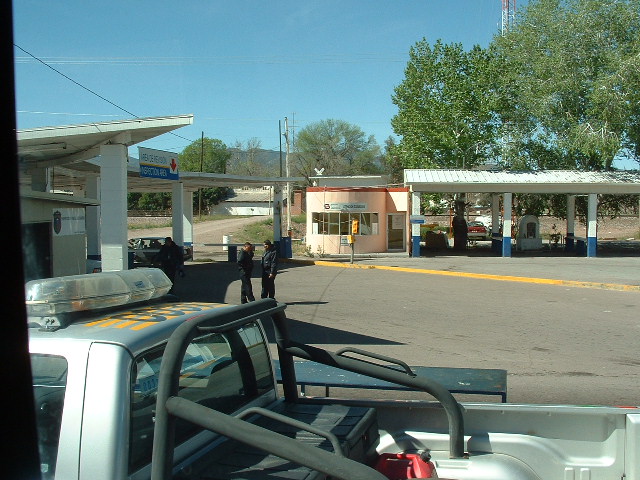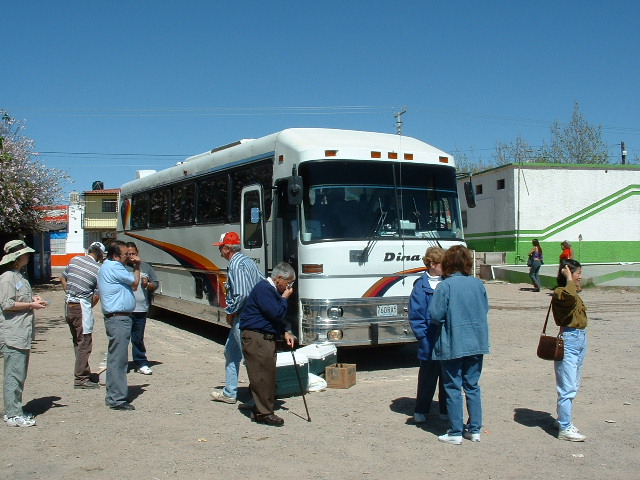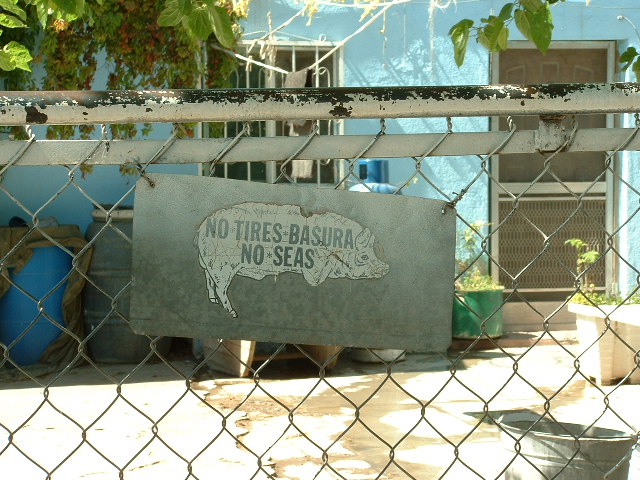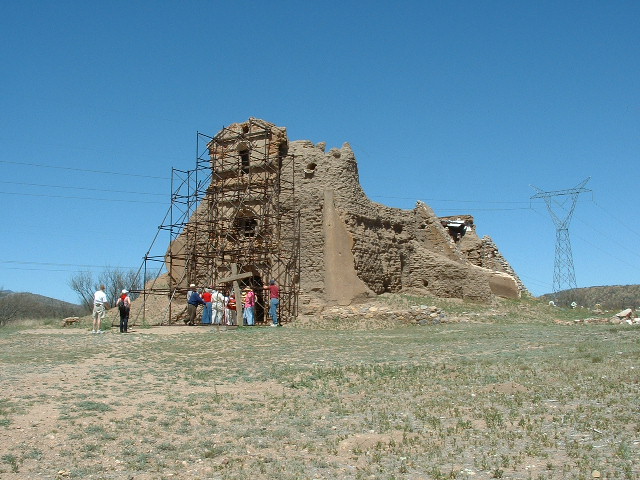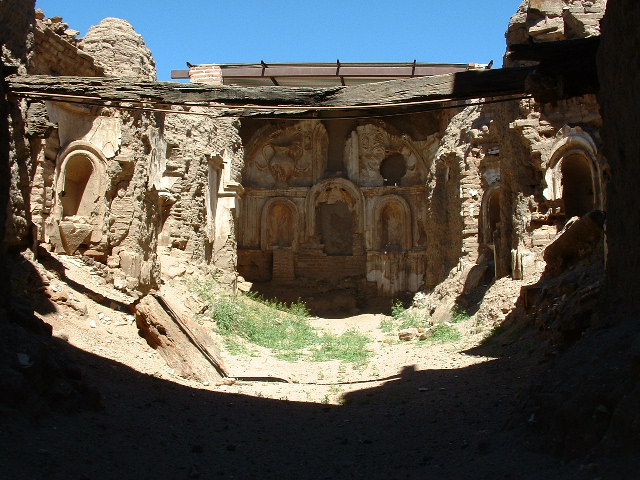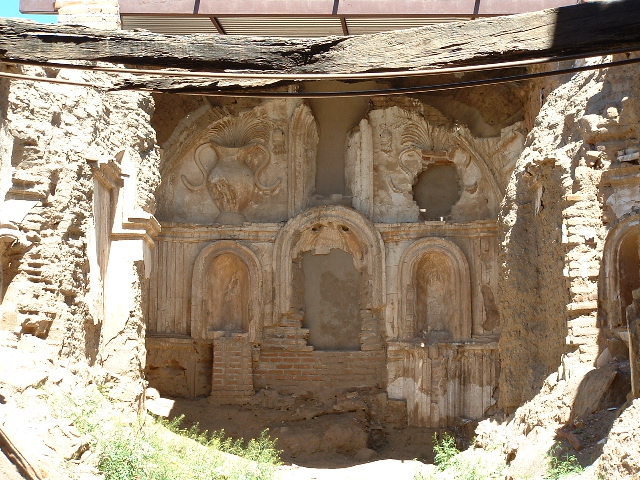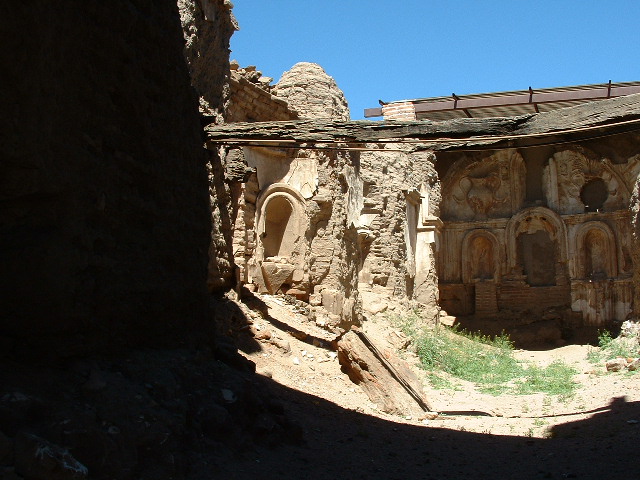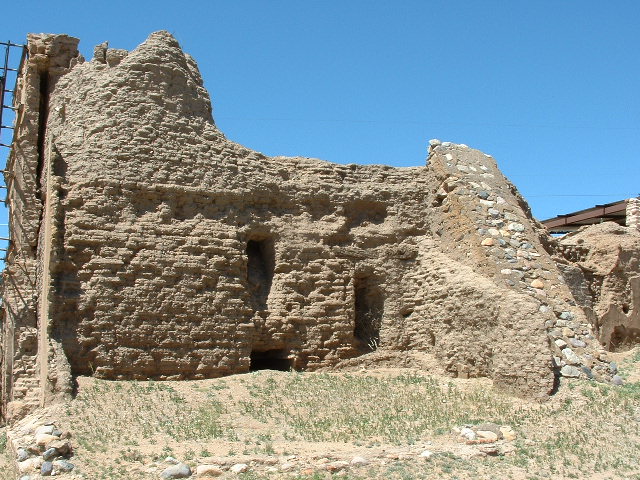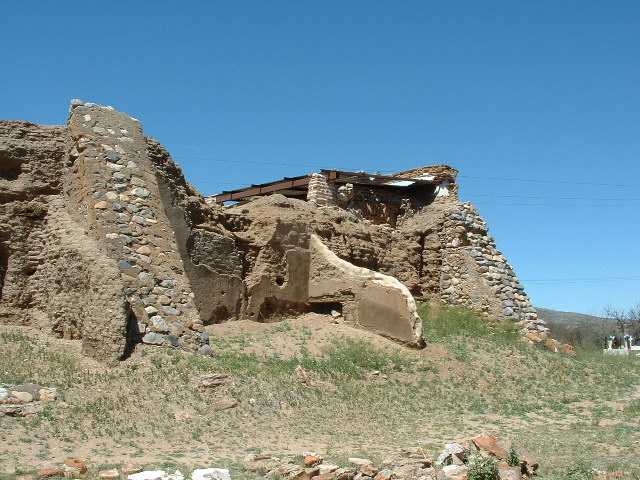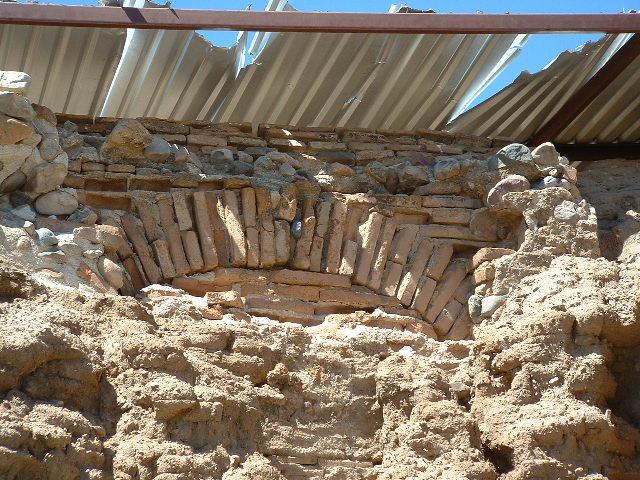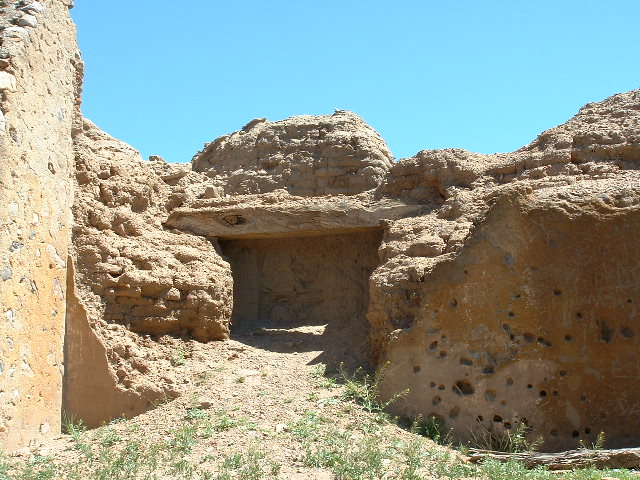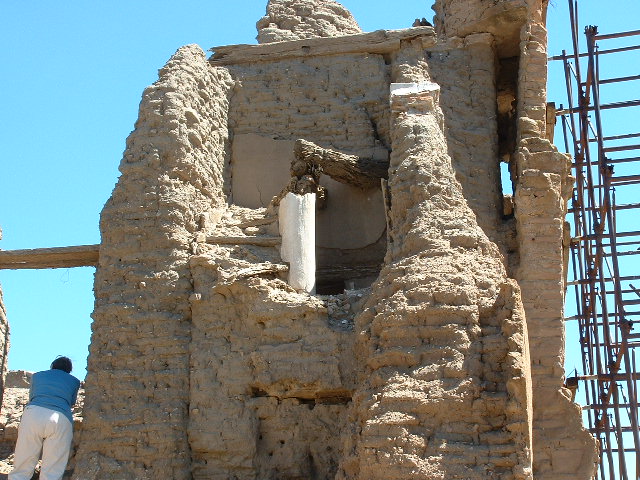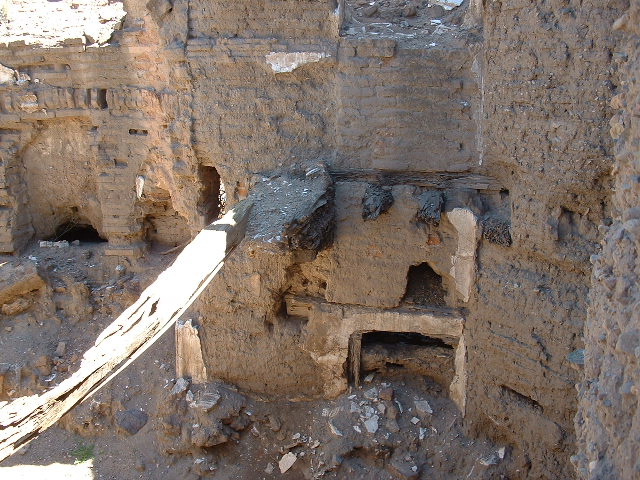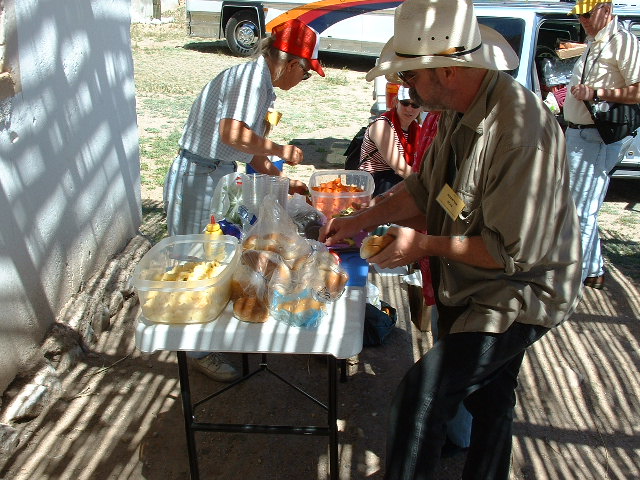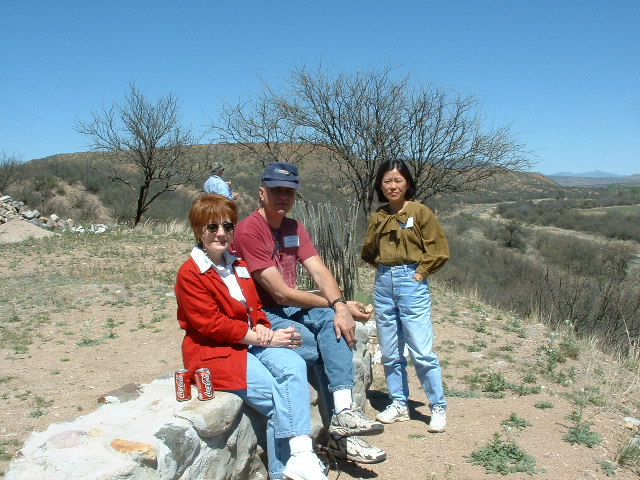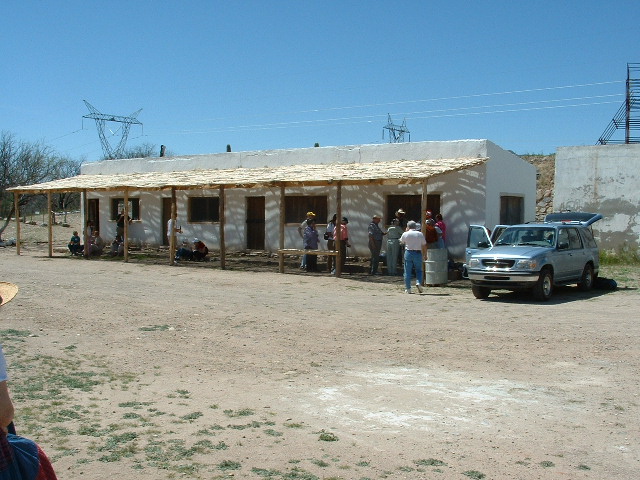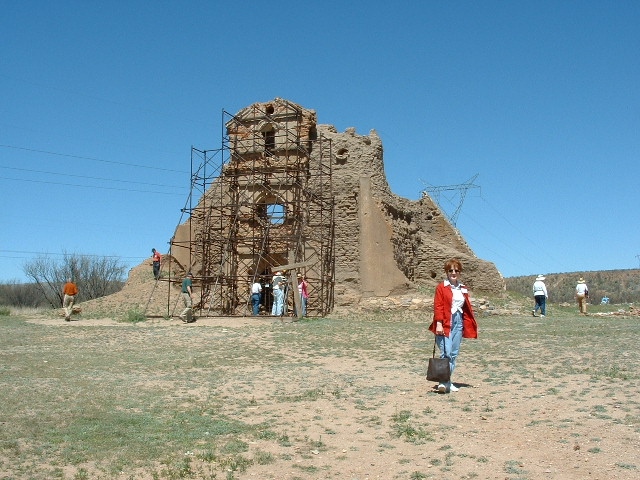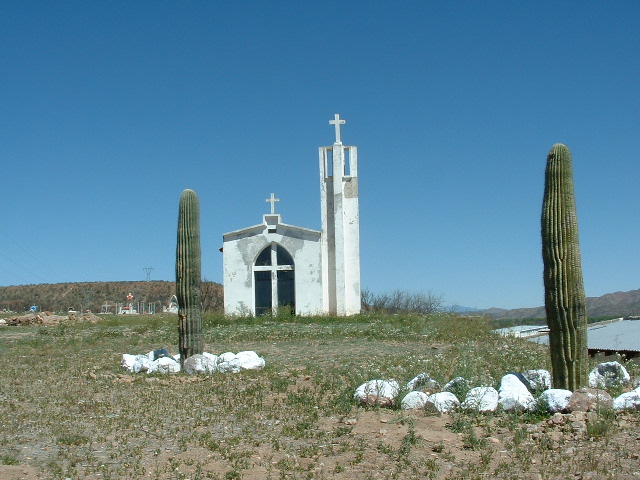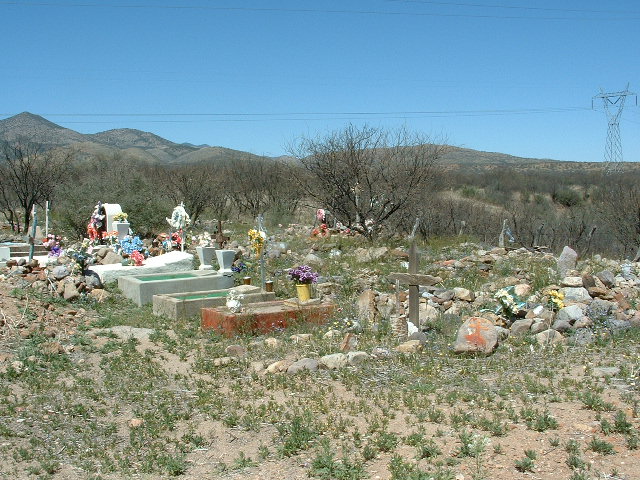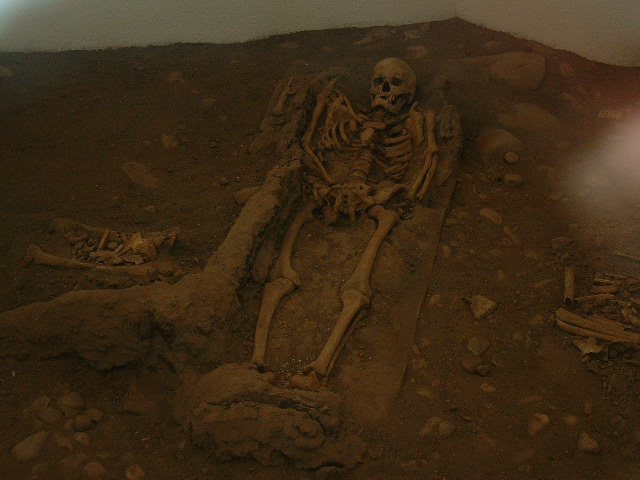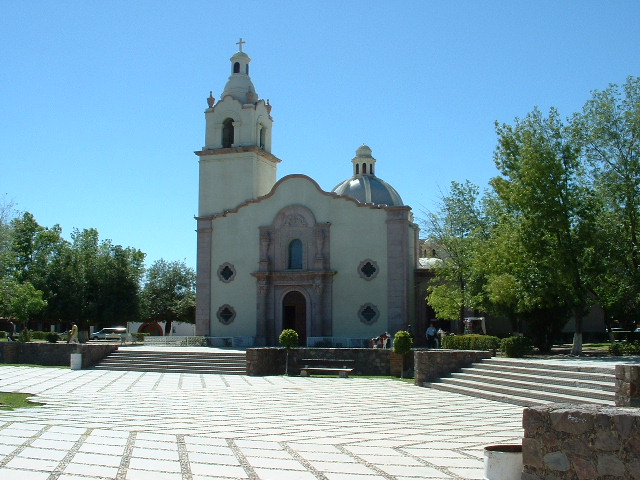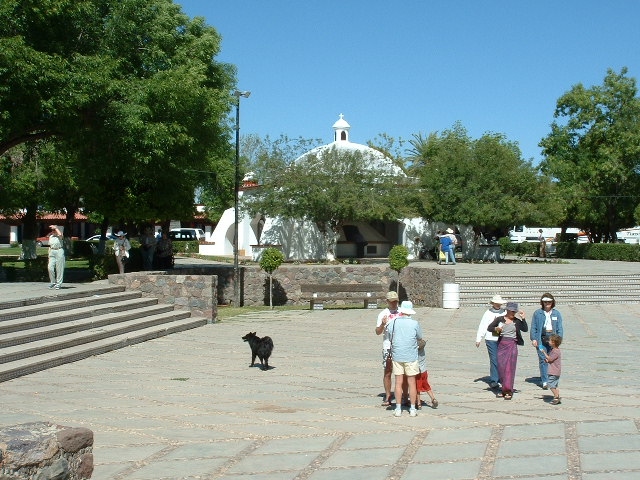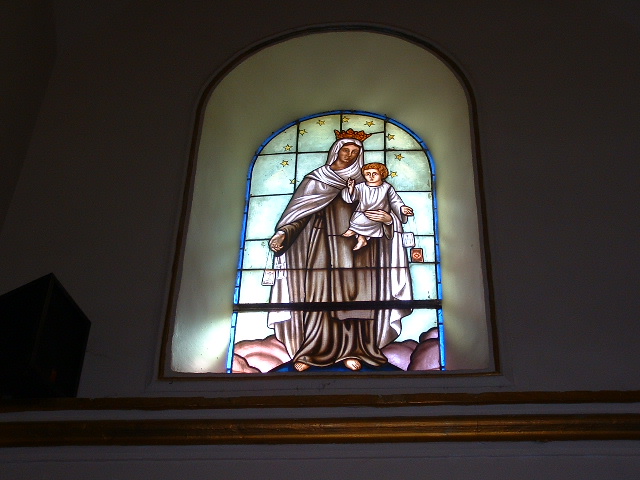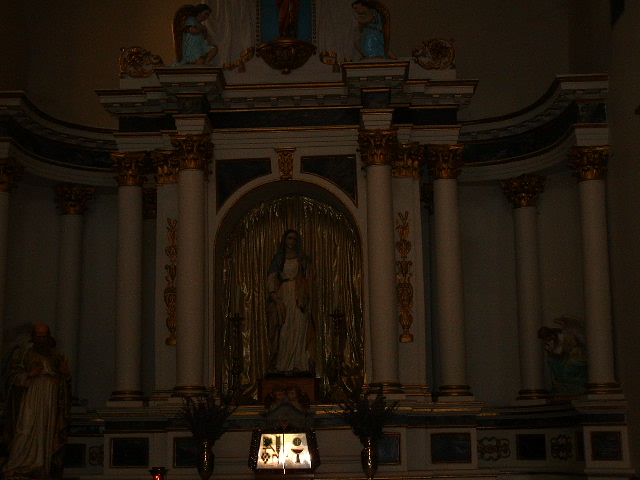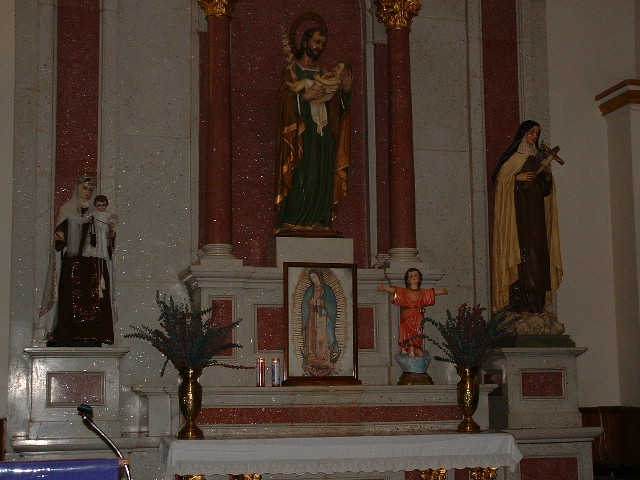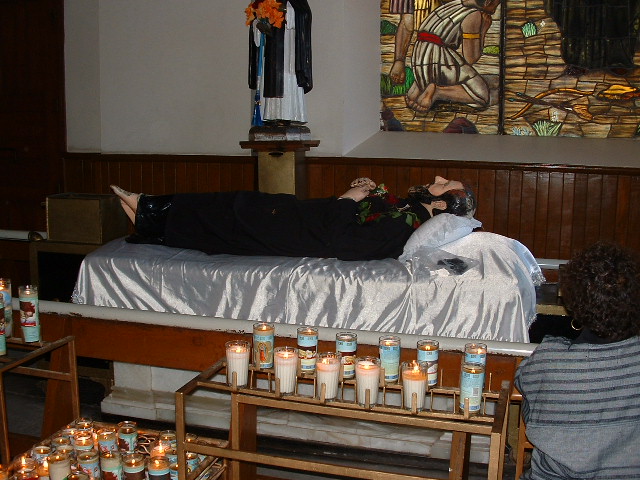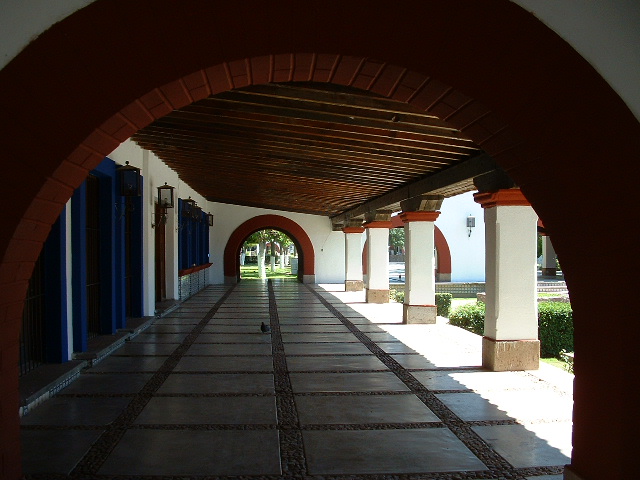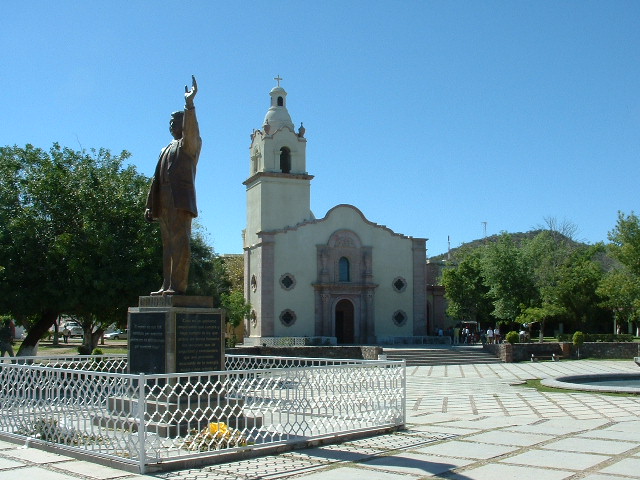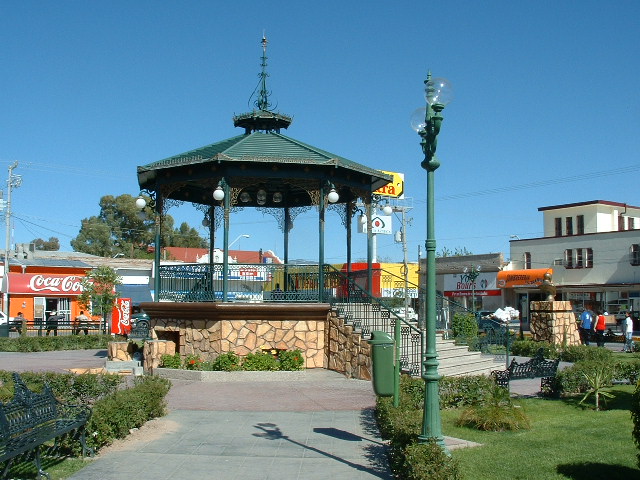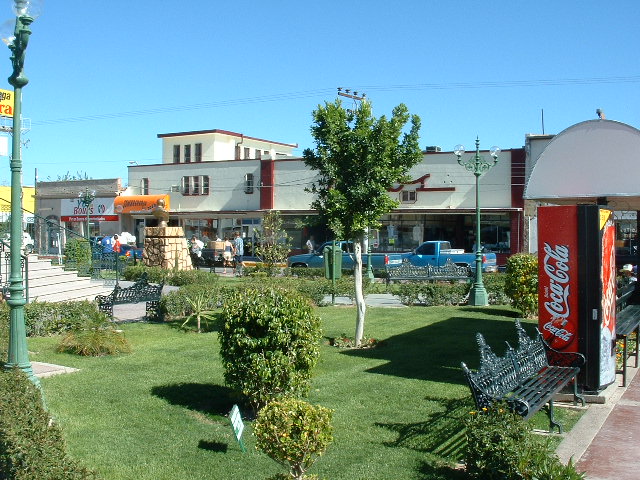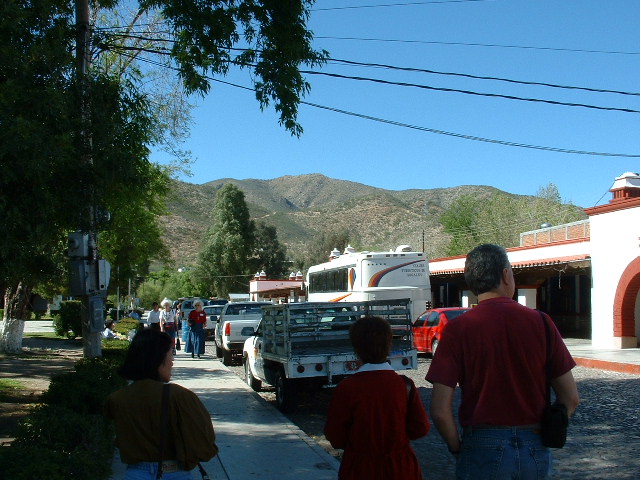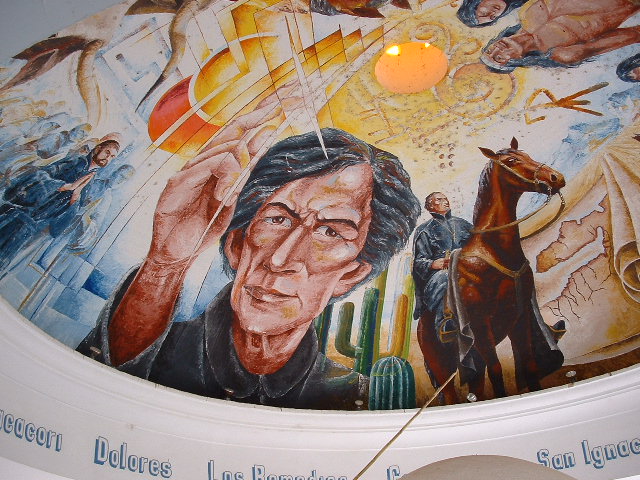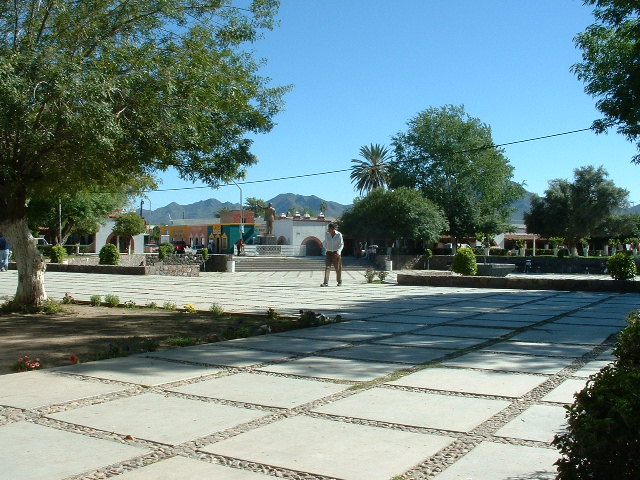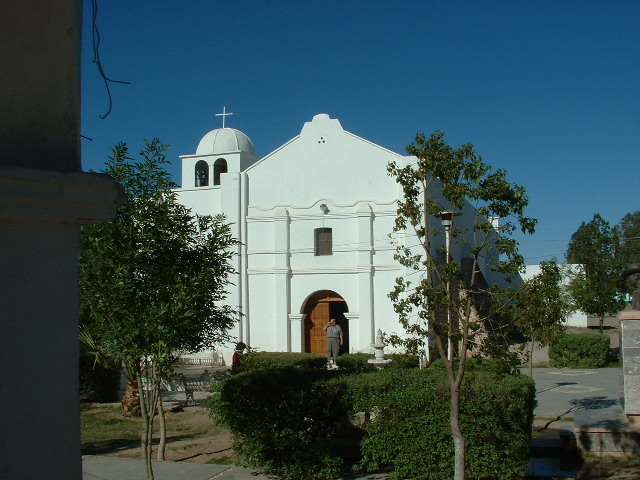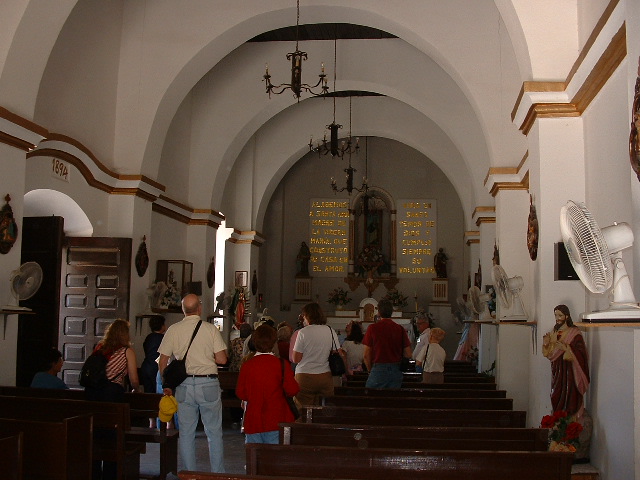As I write this, I realize it has now been over 20 years since I went on one of the most enjoyable excursions ever, and before my memory of it fades completely, I thought I’d share it with you. It was 2003, and our friends Dave and his wife came out from California for the event. We had learned that a group based right here in Tucson offered a tour of missions in Sonora, Mexico that had been established by Father Kino, the renowned Italian Jesuit missionary who had worked and traveled extensively in the area then known as the Pimería Alta. Although a few of his missions in Arizona still survived, our tour would focus on some of the missions in Sonora. We would be gone for 3 days and 2 nights, and it promised to be an exciting time.
The four of us left from home in Tucson and made our way to the meeting place in mid-town, where we boarded a chartered bus. An hour later, we had made our way down to the border at Nogales where we crossed into Mexico. All of us disembarked and then boarded a nice Mexican chartered bus – this made sense, as the travel we would now undertake was all in Mexico. A short ride later brought us to the Mexican government inspection station at KM 21, where visas and vehicle permits were checked.
Once past the station, our bus continued south. Now there’s something important I need to tell you about our tour. Our tour guides, both from Tucson, announced early on that throughout the tour, there would be 2 large coolers filled with ice and drinks – they would be in the aisle up close to the front of the bus. Our guide would get on the public address system anytime there was something of interest to point out to us. He mentioned that we should all feel free to help ourselves to cold drinks from the coolers at any time. One held cans of sodas and the other was filled with bottles of beer. We noticed that one man helped himself to a beer, and I said to Dave that maybe we should have one too. He remarked that it was only 10:00 AM, and wouldn’t that be a bit crazy. I agreed that it’d be a bit unusual, but what the heck! So I went up and got us a couple of bottles of ice-cold Pacífico, which the guide opened for me. We sat and enjoyed them as we rolled along.
65 KM south of Nogales, we arrived at the town of Ímuris, then left Highway 15 there and headed northeast on Highway 2 for 40 KM to our first destination. But first, we stopped for a bathroom break and to stretch our legs.
Near where we stopped, I saw this sign and just had to take a picture of it. It says “Don’t throw garbage, don’t be …….” and you can see the image on the sign, so it’s saying “Don’t litter, don’t be a pig”.
By around noon, we had arrived at our first destination, the first of the many missions we would visit. Its proper name was La Misión de Nuestra Señora del Pilar y Santiago de Cocóspera. I’m not sure what any of us were expecting before we arrived, but it probably wasn’t this.
You could tell right away that this must have been a grand church back in its day. Father Kino ordered the start of construction in the year 1697. However, the area was prone to invasions by marauding Apaches who burned the church in 1698. Nevertheless, repairs were done and improvements made, so that a formal dedication was made in 1704. A good indication of how tough an area this was in which to operate was the fact that by 1730, the church was abandoned and in ruins. In 1746, it was burned again. In 1784, a new priest arrived and much new construction took place. However, after 1836, the state of the church declined once again, and things continued to erode until the present day. This website gives a complete description of the history of the mission and makes for fascinating reading.
If you think about it, way back in 1697 when the church was started, the world was a very different place. The USA didn’t yet exist as such – it was still a colony with a total population of 275,000 people. The pirate Captain Kidd had just been captured, Catholic priests were banned from Massachusetts and Britain held a tight rein on life in the American colonies.
Even though the church was in ruins, there were many interesting features still to be seen, as evidenced by these photos from the day of our visit. I can’t say for sure what we’re looking at in most of them, but it was fascinating, centuries-old stuff.
You can see that the church was built of adobe bricks, which is nothing more than a mixture of earth, water and a binding agent such as straw or grass. If left exposed to the elements – rain, wind, sun – the bricks will eventually dissolve and crumble into a pile of dirt.
The above picture shows how a bit of roofing material has been placed over the top to try to stop the deterioration. You can still see some of the original elements of the construction, what looks like part of an arch.
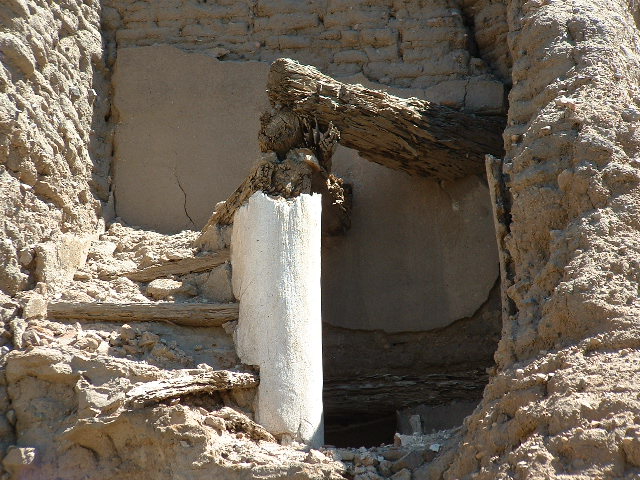
I’m not sure what the white thing is, but I think we are looking at what once was a spiral staircase. The church had one or two of these.
The tour operators set out some things we could use to make sandwiches for lunch.
People who kept an eye on the church lived nearby.
It was felt by some authorities that putting up the scaffolding would help prop up the outside walls and help preserve the structure. As the years passed, though, opinion swung the other way and it was felt that it wasn’t any help at all.
A small modern chapel sat nearby.
There was a small cemetery too, and some of the graves were probably very old.
After a leisurely lunch, we piled into the bus and drove back to Ímuris. Next, it was a half-hour ride of 27 KM southwest to the town of Magdalena de Kino. This was an important stop on our itinerary, for a number of reasons.
Padre Kino remained among his missions until his death. He died from fever on the 15th of March, 1711, aged 65, in what is now Magdalena de Kino, Sonora. A team of anthropologists and historians discovered Kino’s grave on 19 May 1966. Kino lies buried next to Father Ignacio Iturmendi and Father Manuel González. The successful discovery ended nearly forty years of failures to identify the grave site. Kino’s skeletal remains can be viewed in his crypt, which is a national monument of Mexico.
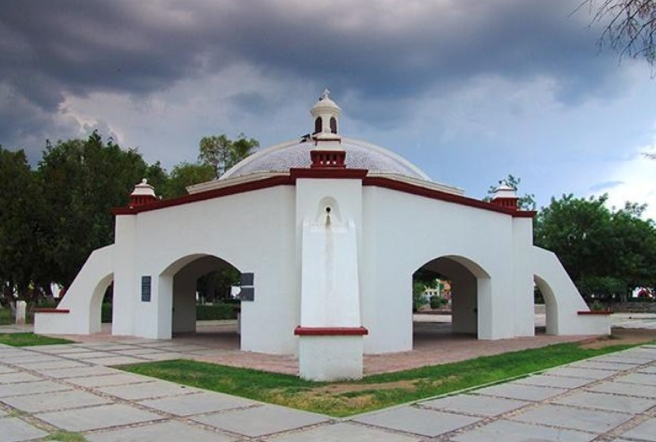
When you enter the mausoleum, you can look down through glass and see the bones of Father Kino, just as they were when he was buried in 1711, more than 300 years ago.
On Wednesday, March 30, 311 years after his death, a special event took place at Padre Kino’s gravesite. Following his unexpected death on March 15, 1711, Padre Kino’s remains were laid to rest under the floor of the Chapel that he had come to the village of Magdalena to dedicate. The chapel and the site of Padre Kino’s burial disappeared from sight and memory until their surprising rediscovery in 1966. In the 1970’s, a beautiful mausoleum was erected over the gravesite, containing the bones of Padre Kino.
The mausoleum and Padre Kino’s bones have been the centerpiece of a very popular pilgrimage every October, drawing crowds from all over southern Arizona, northern Sonora, and the Native American tribal lands – the scene of Padre Kino’s apostolic labors for twenty-four years. This might be a good time to give you a web address to an excellent site that gives a timeline to Father Kino’s personal life and the missions he established.
https://www.nps.gov/tuma/learn/historyculture/eusebio-francisco-kino.htm
Here is the church in Magdalena.
Inside the church was this image of San Francisco Javier, who has been a revered saint in Sonora since he was introduced to the region by Father Eusebio Francisco Kino in the late 1600s.
It was an hour and a half well-spent in Magdalena, and then it was time to move on. In an easy half-hour, our bus traveled 18 KM to the southwest on Highway 15 and arrived in Santa Ana, a small town of 10,000 souls. Santa Ana was never a mission community, but began its life as a Spanish ranch at least as early as 1739; it was a Spanish village by 1751. The church possibly was constructed during the early nineteenth century, with later additions/alterations completed in 1894 and again in 1992. Based on a photo from 1920, the domed bell tower appears to have been added during the 1992 renovation.
A view inside the church in Santa Ana.
We didn’t stay long in Santa Ana, and soon headed out of town on Mexican Federal Highway 2. It was a stretch, about 110 KM, to the city of Caborca. This is a larger city, population about 67,000, and is supported mainly by agriculture and mining. Father Kino founded the city in 1693. A curious bit of history occurred in 1867. In that year, in the month of April, during the Reform War, a force of American colonists, captained by Henry A. Crabb, was defeated and massacred by rebel forces of Ygnacio Pesquiera and Tohono O’odham warriors. Pesquiera had initially invited the Americans to settle in northern Sonora, to help the fight against the federal Mexican government; however, before the Crabb Expedition arrived in Sonora, Pesquiera’s rebels defeated the federal troops and took over the state. Because of this, when the Crabb party arrived, Pesquiera ordered his men to attack the Americans. Over the course of eight days, from April 1st to the 8th, about 25 Americans and a reported 200 Mexicans and O’odham were killed in battle, at the end of which, some 55 captured Americans were executed by firing squad, including Henry Crabb. In memory of the Crabb Massacre, the seat changed its name to Heróica Caborca in April 1948.
When we arrived in Caborca, the bus took us to a motel. It was nothing fancy but it was clean and quiet. Strangely, thinking back on that day, I can’t remember what we did for a supper, but I do remember that our tour guides set up a happy hour in the shady courtyard. It was a nice, relaxed setting after a long day. They had made up big containers of margaritas, and you could just help yourself to as much as you wanted. And of course, there was the endless supply of bottles of ice-cold Pacífico to go along with it. I’m guessing that they must have also had something to eat, at least to snack on, so we didn’t do all that drinking on an empty stomach. In any case, Dave, Dottie and I got pretty bombed – it seemed like the perfect ending to a tour of Catholic missions.

